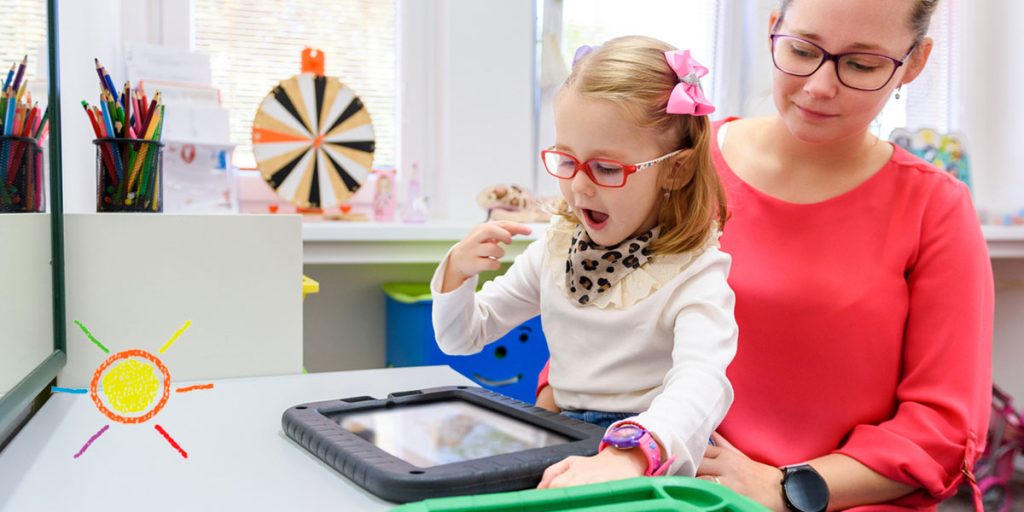Almost all children love having birthday parties, but creating them might take some thinking. For parents of a loved one diagnosed with autism, coming up with inclusive birthday party ideas can be challenging. Creating something that celebrates your child while accommodating their needs requires careful planning. With the right activities and communication, you can create a birthday party they won’t forget.
Whether you’re looking for a few ideas or support planning the whole birthday party, we’ve got some autism-friendly event tips to help you out. Just remember: you want your child to have fun. Focus on what they like when reading these tips, and you’ll build the perfect celebration. Here are a few sensory-friendly autism birthday party ideas:
1. Pick a Venue
Planning sensory-friendly celebrations starts with finding the perfect party space. Children with autism often rely on routines to help them stay relaxed. You’ll need to decide on a venue that makes your child feel comfortable while allowing enough space for a birthday party.
If your child is comfortable with locations away from home, they might like a party somewhere around town. Choose something quiet and comfortable, away from loud noises, bright lights or lots of people. Parks and community centers can be great options for kids who love the outdoors. They’ve got lots of natural lighting and space, and they’re pretty accessible.
Not all children with autism are comfortable in non-home locations. Your house is a great party venue — it’s got all the comforting toys, space and lighting your child is familiar with. Throwing a party at home lets you control the entire experience, making it as comfortable and fun for your child as possible.
Whatever venue you go with, make sure it’s got parking or transportation options for attendees. Consider spaces with acoustics that avoid magnifying sound and flickering lights. Many children with sensory difficulties struggle with these since they can overstimulate them. Addressing venue details early in your planning process will help you pick a space your child can feel comfortable in.
2. Plan Activities
Sensory-friendly activities are a great way to bring a birthday together. Having inclusive activities lets your guests all participate and celebrate together. Activities that engage hands and minds let everyone create at their own pace while still doing the activity together. Here are some great adapted sensory activities for sensory-friendly parties:
- Arts and crafts stations: Arts and crafts stations with lots of diverse textures, shapes and colors is a great party activity. They let guests engage their senses in a controlled manner while still having fun. Do something like painting, drawing or creating sensory-friendly crafts. You get to provide entertainment while providing a therapeutic outlet for expression.
- Sensory bins: Sensory bins are another great inclusive option. Fill bins with rice, sand, beans or other sensory items. Letting kids play around in the bins gives them an interesting tactile experience and a safe place to explore.
- Interactive games: You could also plan sensory-conscious party games or activities that promote collaboration over competition. Group puzzles or art projects let kids work together and encourage inclusivity while still being low-pressure. Something that lets everyone work with each other helps provide entertainment without isolating anyone.
3. Choose Decorations
Good autism-friendly party planning has to include decorations and lighting. While you’ll want to have some decorations for the party, try to follow the idea that “less is more.” Stick to colors you know your child likes, and use balloons and streamers in moderation. Balloons can lead to surprise popping sounds, so try to keep them in careful spots. For themes, pick something your child already likes — focusing on their interests will help keep them comfortable while still adding an extra touch to the party.
For other lights and décor, avoid flickering or harsh lights. Having string lights or fairy lights up lets you decorate with a soft ambiance. You might even want to consider dimmable lights so lighting can be adjusted for your guests. Incorporating soft fabrics, tactile elements or other sensory-friendly décor will let everyone engage with the party comfortably. You know your child best — work with their likes to create a space they’ll want to be in.
4. Select Party Favors
Every good party needs favors. When you’re picking party favors for a sensory-friendly birthday, prioritize inclusivity. Choose favors that engage multiple senses without being intrusive. Try to avoid items with sharp textures, loud sounds or strong smells — these might be overwhelming for some individuals. Great sensory-friendly alternatives include:
- Stress balls
- Fidget toys
- Textured items
- Slime
- Temporary tattoos
- Art supplies
You could even personalize party favors based on each guest’s preferences. This will involve more time and effort, so make sure it’s something you can handle with everything else on your plate. Reach out to guests to get an idea of what they’d like best. With inclusive or personalized party favors, everyone will leave your party with something they can enjoy long after the birthday is over.
5. Send Out Invitations
Part of successful special needs birthday planning is compiling the guest list. Design fun, on-theme invitations that clearly explain the sensory-friendly nature of the party. Help guests out by describing the event’s atmosphere so everyone knows what to expect. Let guests know they can give you any notes on specific sensory needs or preferences their children might have. This proactive approach lets your child and all the guests know the party is going to be a welcome place that works with their individual requirements.
While many neurotypical children’s parties are large, you might want to keep your child’s party small. Too many people being loud or waving around objects can lead to overstimulation for a child with autism. Crafting a smaller, more intimate experience lets your child socialize safely while still bringing everyone together to celebrate their birthday. With well-informed guests and a smaller invitation list, you can include people who will understand if your child needs a break during the party.
6. Use Regular Communication
Open and clear communication is key to your sensory-friendly party’s success. Let your guests know they can speak to you about any of their specific needs or preferences. Proactively encouraging communication lets you tailor the party to accommodate everyone while creating a space for your child to have fun.
As the party date gets closer, keep your guests updated on the venue, schedule and planned activities. If you want to get fancy, create a visual schedule that outlines the events, helping attendees prepare for the party. On the day of the party, let everyone know where the quiet area is and ensure everyone knows they are in a space where they can be comfortable.
Don’t forget to communicate with your child as well. Let them know what to expect early so they can adapt to the birthday party in their schedule. Consider including them in some of the decisions to make them feel more involved. Lay out two food options or decoration types and have them pick the one they like best. Let them choose from their favorite clothes to help them feel comfortable during the party. Making sure your child and the guests are prepared and cared for helps everyone have a good time.
7. Set a Time Limit
While you might think a multi-hour extravaganza could be fun, you should keep your child’s birthday party short. The combination of activities, sounds, visuals, expectations and more could all pile up and make their birthday party overstimulating quickly. While you should have different activities to keep everyone engaged, they should be shorter. Focused, shorter sessions help prevent sensory overload. Plan all activities with a defined timeframe so everyone can get in on the fun without feeling overwhelmed. With breaks and set times, everyone will have space to breathe.
As a parent, you know your child’s limits. Try to keep speeches and instructions short but clear for better engagement. Have the party only as long as you think your child will want it to be. This might be three hours, or it could only be one hour. The most important thing is that they have fun. Don’t be afraid to cut things short if your child is done for the day — thank everyone for coming and hand them their gifts on the way out.
8. Invest in Noise Control
Keeping noise under control is essential for a sensory-friendly experience. Loud sounds can be overwhelming — it’s crucial to manage sound levels throughout the celebration. Provide guests with noise-canceling earplugs or headphones to help. You could also create a designated quiet area for anyone who needs a break. Another option is to have multiple rooms for the party. This way, you break up the number of people in each room, reducing the noise in one space and helping everyone avoid an overly loud party.
While planning activities and entertainment, pick things that avoid loud noises or sudden sounds. If your child likes background music, play calming music quietly during the party. You should also remember to check any party favors or decorations for potential noise issues. Gifts that create loud sounds or games that involve clapping might be too much for the party.
Talk to your guests about keeping noise controlled during the party. This lets everyone know what to expect and ensures you have a collaborative effort. Put up clear signs that let everyone know what the quiet areas are. You’ll help everyone know how to behave, and it makes things clearer for anyone who needs to step out.
9. Have Sensory-Friendly Food
No matter how long your party is or where it’s happening, guests are going to want food. Take the time to talk to your child and the other guests to find out dietary preferences, restrictions and sensitivities. You want to design a menu that your child is comfortable with that other guests will also enjoy.
Offer a variety of snacks and drinks that fit different tastes and needs, including dairy-free, gluten-free and nut-free options. Include clear labels with ingredients so everyone can make safe, informed choices. Since it’s a party, you want everything in easy-to-manage portions. Some guests might have difficulty with specific food sizes or textures — smaller portions make everything more manageable. Try to make things bite-sized or include finger foods to achieve this. When you’re serving a meal, include different options so everyone has something they can eat.
Always be aware of potential sensory challenges around food. Different smells and flavors can be triggers for children with autism. Try to avoid overly pungent or spicy foods that could be overwhelming. While you might be able to completely avoid everything, having different options helps you accommodate everyone’s sensory preferences.
10. Create Quiet Spaces
Quiet spaces are a great way to give guests a break. These areas provide a comfortable retreat away from the sounds and stimulation of the party. Use soft seating, blankets or supportive cushions to provide guests with a good place to decompress.
If you can, include soothing colors, background music or soft lighting. Give visitors the option of using whatever they want in the room so it fits their specific sensory needs. Having a quiet space lets anyone with sensory sensitivities take a break during the party, no matter how stressed they are.
11. Be Flexible
Flexibility is absolutely essential for hosting a successful, sensory-friendly birthday party. Your child may become overstimulated despite your best efforts — that’s OK. Let them go to their bedroom or quiet space to decompress. Make sure to let them decide if they want to come back out again or not. If your child isn’t enjoying the activity they’re doing, let them move on to the next one or grab a snack. Staying flexible lets them have the best possible time at their own birthday party.
If any of the other guests have sensory difficulties, encourage them to use the quiet space or leave if they need to. Your child’s party will already be less intense than the average birthday party — it’s fine to have people leave early or take a step back if needed. The most important thing is making sure everyone is comfortable and feels safe.
Get Support With MySpot Care
Understanding how to help your child with autism navigate their strengths and challenges can be stressful. With Applied Behavioral Analysis therapy (ABA) from MySpot Care, you can help your child grow and flourish. From handling birthday parties to preparing them for joining the workforce someday, we’re here to provide the support they need.
Our board-certified and licensed behavior analysts are devoted to guiding your child on their journey, delivering individualized therapy to improve their skills and confidence. Our in-home ABA therapy programs are designed to help individuals with autism and their caretakers build the tools needed for effective play, communication and social skills. Contact us online to learn more about our in-home or location-based services today!


